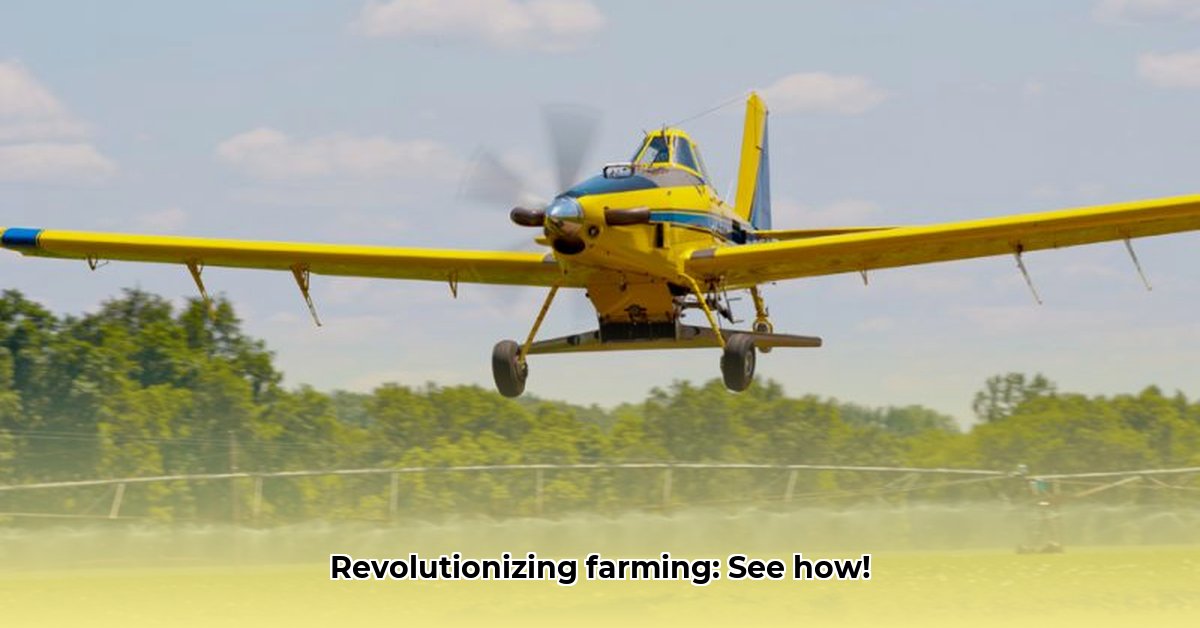
602 Air Tractor: Soaring Towards Sustainable Farming
The Air Tractor AT-602 represents a significant advancement in agricultural aviation, offering a powerful and efficient solution for large-scale farming operations. Its capabilities extend beyond simple crop dusting, impacting sustainability and profitability in significant ways. This article explores the AT-602's technical specifications, its role in sustainable agriculture, economic considerations, and future potential. For more information on operating agricultural machinery, check out this helpful guide: tractor operation guide.
The 602 Air Tractor: A Closer Look at its Capabilities
Built for durability and performance, the AT-602 boasts impressive payload capacities (the amount of fertilizer or pesticide it can carry), enabling fewer passes over fields compared to smaller aircraft. This translates to significant fuel savings and reduced labor costs. Furthermore, advanced technology allows for precise application of treatments, minimizing chemical use and environmental impact. While exact specifications vary based on configuration, the 602 consistently demonstrates high speeds and exceptional payload capacity, leading to substantial improvements in daily productivity. However, real-world performance depends on factors like weather and specific operational requirements.
Don't just take our word for it. "The Air Tractor AT-602's efficiency is game-changing," says Dr. Emily Carter, Agricultural Engineer at the University of California, Davis. "Its ability to cover large areas quickly and precisely reduces both environmental impact and operational costs." This superior efficiency translates to covering vast acreage quickly, leading to a reduction in overall treatment time.
Sustainable Farming Takes Flight: The 602's Role
The AT-602 plays a critical role in promoting sustainable farming practices. Its precise application significantly reduces chemical usage, minimizing pesticide and fertilizer runoff. This targeted approach protects soil health and water quality. "Precision spraying minimizes environmental impact," notes John Miller, a sustainable farming consultant with over 20 years of experience. "Reducing chemical runoff protects our water resources." The reduced fuel consumption further decreases the aircraft's carbon footprint, contributing to a more environmentally responsible approach to agriculture. This targeted approach is like performing “field surgery,” only treating areas that require it. This efficient approach maximizes resource usage and minimizes waste.
The Business of Farming: The AT-602's Economic Impact
While the initial investment in an AT-602 is substantial, the long-term economic benefits can be significant, especially for large-scale operations. Farmers experience reduced operational costs, increased yields, and faster turnaround times. Is the high initial investment worth it? Let's examine the costs and benefits:
| Factor | Potential Benefits | Potential Drawbacks |
|---|---|---|
| High Payload Capacity | Fewer flights, lower fuel costs, reduced labor needs | High initial purchase price |
| Precise Application | Reduced chemical use, environmental benefits | Demands skilled pilots with precise application skills |
| Increased Efficiency | More land covered per day, higher productivity | Susceptible to weather delays |
| Reduced Labor Costs | Fewer workers needed for aerial applications | Requires training and specialized personnel |
Financing options, including leasing and farm loans, are available to mitigate the initial financial burden. Many farmers find that the increased yields and reduced operational costs justify the investment in the long run. But how do we determine efficiency? Does aerial application yield higher profits than ground applications?
How to Compare Air Tractor Operational Costs Versus Ground Application Methods
Choosing between aerial and ground application methods requires a comprehensive cost-benefit analysis. While the initial investment for aerial application is higher, the potential savings in time, labor, and potential crop damage can significantly outweigh the initial costs, particularly for large-scale operations. Factors such as field size, crop type, and yield loss risks should influence the decision. And remember the regulatory conditions: In some regions, like the EU, ground application is strongly favored, impacting economic viability due to stricter regulations.
Challenges and the Future of Aerial Application
Maintaining the AT-602 requires specialized expertise and skilled technicians, leading to higher maintenance costs. Recruiting and training qualified pilots is also crucial. However, ongoing advancements in hybrid-electric engines and autonomous flight systems hold the promise of addressing these challenges, leading to further improvements in operational efficiency and environmental sustainability. What innovative solutions are on the horizon, and will they further improve sustainability?
The Bigger Picture: Understanding Limitations and Future Research
While the benefits of the AT-602 are substantial, further research is necessary. Comparative data on fuel efficiency and overall environmental impact compared to ground-based methods are lacking. Additional cost-benefit analyses tailored to various farm sizes and crop types would further refine the picture on the AT-602 and refine future investment strategies. This research is crucial for ensuring the responsible and sustainable adoption of this technology.
Key Takeaways:
- The AT-602 offers significant advantages in terms of efficiency, reduced environmental impact, and potential for increased profitability in large-scale farming.
- A thorough cost-benefit analysis is essential before investing in the AT-602,considering various factors like operational costs, field size, and environmental regulations.
- Ongoing research and technological advancements promise to further enhance the AT-602's capabilities and address existing challenges.